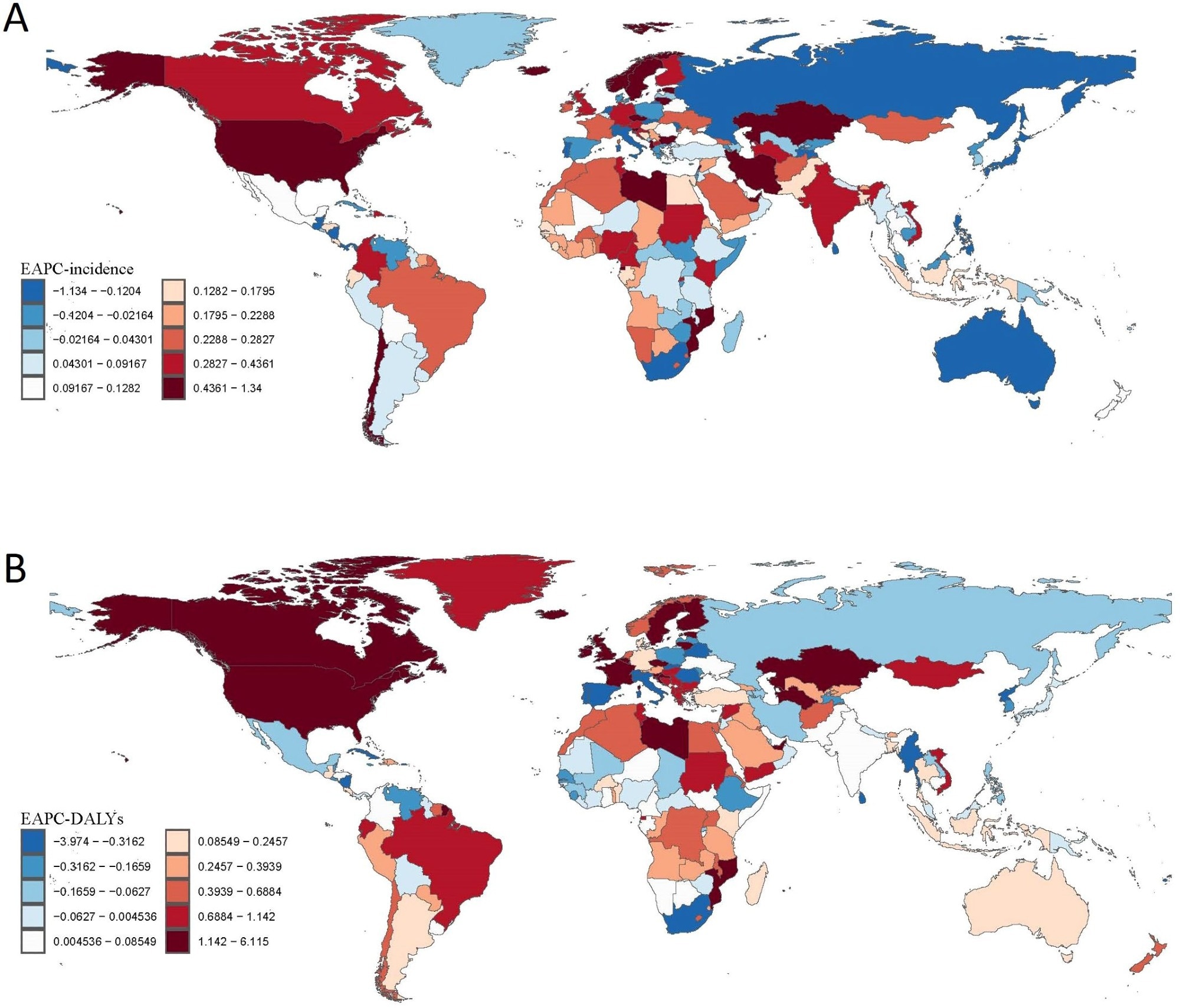Despite fewer new addiction cases worldwide, a sweeping analysis finds drug-related deaths surging, exposing critical failures in global harm-reduction and recovery systems.
 Study: The evolving burden of drug use disorders: a comprehensive epidemiological analysis from the 2021 Global Burden of Disease study. Image credit: Norb_KM/Shutterstock.com
Study: The evolving burden of drug use disorders: a comprehensive epidemiological analysis from the 2021 Global Burden of Disease study. Image credit: Norb_KM/Shutterstock.com
Drug addiction is a looming public health problem, triggering a recent review on the worldwide situation using data from the Global Burden of Disease (GBD) 2021 study. The paper appeared in Frontiers in Psychiatry.
Introduction
Drug addiction, or drug use disorders (DUDs), are “chronic, relapsing conditions characterized by the compulsive use of psychoactive substances despite significant physical, psychological, or social harm.” DUDs affect nearly 300 million people globally, according to the World Health Organization (WHO), mainly involving opioids, cannabis, and stimulants like amphetamine and cocaine. Many addicts misuse more than one substance.
Drug addiction hinders social development, promotes disability and death, and increases the crime rate. Unfortunately, rapid socioeconomic change, globalization and urbanization have been associated with increasing drug use and widening disparities between regions, transforming the social and economic landscape, most strikingly in high-income North America.
This region is considered highly developed, but is going through a drug addiction crisis, especially affecting young adults, males, and opioid users. The United States, particularly states such as West Virginia, remains severely affected, and the rates continue to rise.
The current study used GBD data and the Socio-demographic Index (SDI) to examine the situation worldwide. The SDI collates per capita income, educational status, and fertility rate to assign socioeconomic influences by region.
Study findings
Globally, drug addictions have increased in incidence by over a third (36%) between 1990 and 2021, with 13.6 million new cases in 2021. The total number of cases rose similarly by 34% to 53 million.
Over this period, mortality counts more than doubled (a 122% increase), for a total of 137,278 deaths. Interestingly, this comes against an age-adjusted 8% reduction in incidence and a 6% drop in prevalence. However, mortality rose by a third (31%) to 1.65 per 100,000. This indicates
a paradoxical global pattern of reduced incidence but heightened health burden.
Disability-adjusted life years (DALYs) due to drug addiction reflect the number of healthy years of life lost to drugs, either by death or disability. The age-standardized DALY rate increased by 15% to 191 per 100,000 while the total number of DALYs worldwide rose by about 75% to 15.6 million. This rise was greatest in the wealthiest countries and was mainly driven by opioids.
Opioids caused 39% more deaths and 32% more DALYs, to a high of 137 per 100,000, primarily because of rising rates in wealthy developed regions. Cocaine deaths more than doubled to 0.15 per 100,000. Notably, cocaine and opioids are frequently co-used, with potentially synergistic toxicity, compounding health risks.
Opioid addiction has surged because of the availability of the drugs in medical as well as illegal markets, expanded prescription and aggressive marketing of opioids during pharmaceutical deregulation, and regulatory failures to effectively limit access to these highly addictive drugs.
Amphetamine addiction was highest among individuals from a middle-SDI regions (SDI 0.6-0.8), forming the exception to the otherwise strong correlation of sociodemographic region with DALYs. However, its incidence fell by 40%, while mortality increased. Cannabis incidence and prevalence remained steady. Other drug addictions declined in incidence and related deaths.
The greatest rise in deaths and DALYs were in the most developed regions, with a five-fold and over two-fold increase, respectively, compared to the 41% drop in DALYs in middle-income countries.
Affluent North America was hardest hit, with an 11.2-fold increase in mortality, rising from 6,125 to 74,451 deaths. Eastern sub-Saharan Africa had ~150% rise in incidence. In contrast, East Asia had a 15% drop in new cases of drug addiction, a change partly attributed to stricter anti-drug policies such as China’s 2008 Anti-Drug Law.
The United States had the highest age-standardized incidence and prevalence, at 531 and 3,821 per 100,000, respectively, similar to Canada and Australia. Even though Estonia and Iceland also had a high incidence, the mortality was low. Both case incidence and prevalence were low in China.
Younger men (20-24 years old) were at 35% higher risk for drug addiction than women, at 386 and 286 affected men and women per 100,000, respectively. The risk among boys multiplied sixfold between the ages of 15 and 19 years. Even after the age of 60 years, the incidence remained at 40 and DALYs at 144.
The highest proportion of deaths was between the ages of 25 and 29 years, at 3.45 per 100,000 in men and 1.12 per 100,000 in women. Drug addiction is linked to poor education, low employment, poverty, and social isolation. Institutional settings such as prisons and marginalized low-income neighborhoods show disproportionately high addiction rates, contributing to social unrest and combined mental illness.
Future programs should integrate rigorously tested preventive and treatment interventions that also take into account socioeconomic and clinical features driving drug addiction.
 Global Spatial Distribution of Estimated Annual Percentage Change (EAPC) in Drug Use Disorders (DUD) Burden, 1990–2021. (A) EAPC in age-standardized incidence rates of DUD across regions and countries. (B) EAPC in Disability-Adjusted Life Years (DALYs) of DUD across regions and countries.
Global Spatial Distribution of Estimated Annual Percentage Change (EAPC) in Drug Use Disorders (DUD) Burden, 1990–2021. (A) EAPC in age-standardized incidence rates of DUD across regions and countries. (B) EAPC in Disability-Adjusted Life Years (DALYs) of DUD across regions and countries.
Conclusion
Despite preventive strategies that caused a reduction in new cases of drug addiction, addicts are doing worse than before, with higher rates of drug-related deaths and disability. This shows a potential lack of effective rehabilitation and harm-reduction approaches, especially in countries with a high SDI.
The authors emphasize that prevention alone is insufficient, calling for integrated, data-driven strategies that combine harm reduction, treatment access, and long-term management. Integrated programs are needed to help tackle this global epidemic.
Download your PDF copy now!